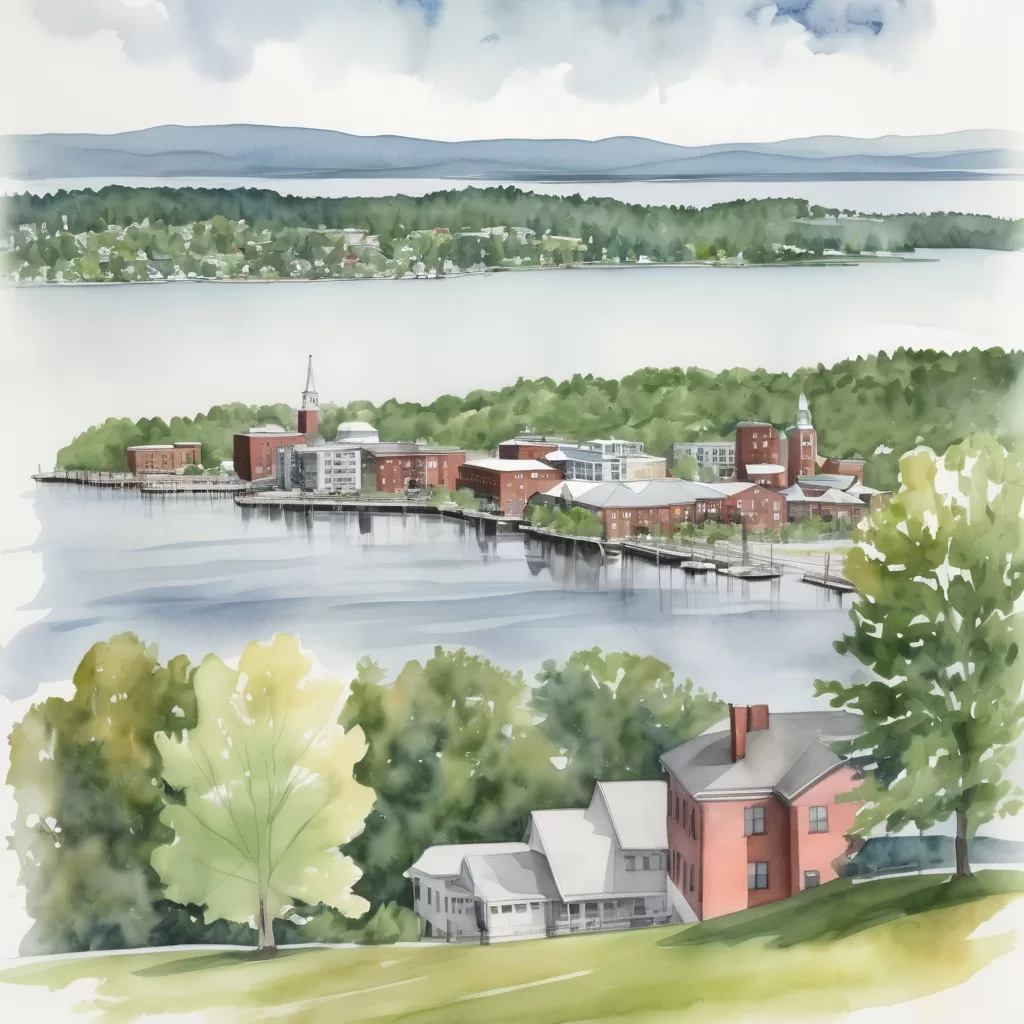Essentials of Bird Watching in South Burlington
Bird watching in South Burlington offers a variety of unique experiences due to its diverse landscapes, including wetlands, meadows, and deciduous forests. Understanding the best spots, bird habitats, and seasonal variations enhances the birding experience for enthusiasts and novices alike.
Best Spots for Avian Enthusiasts
South Burlington features several prime locations for bird watching. One highlighted spot is the Burlington Waterfront, known for its stunning views and accessibility. Birders frequently spot species like Bald Eagles and Peregrine Falcons along the shoreline.
Another significant location is the Green Mountain Audubon Center, located just south of the city. This center provides a habitat for numerous bird species and hosts guided bird walks.
The Island Line Rail Trail is also popular. This trail runs through scenic wetlands and meadows, making it an excellent area for observing various songbirds and migratory species during different seasons.
Understanding Bird Habitats
Different bird species thrive in specific habitats. In South Burlington, wetlands attract waterfowl such as ducks and herons. These areas are rich in food sources and provide essential nesting grounds.
Deciduous forests offer shelter and foraging opportunities for many songbirds, including warblers and vireos. The dynamic environment, with its changing foliage, creates an ever-evolving landscape for bird watchers.
Meadows are vital for grassland species. These open areas serve as breeding grounds for birds like Bobolinks and Eastern Meadowlarks. Understanding these habitats allows observers to select the right time and place for their birdwatching endeavors.
Seasonal Birding Guide
Each season brings unique opportunities for bird watching in South Burlington. Spring is a prime time for migration. Many species return to nest, making it an exciting time for observers.
In summer, nesting birds become prominent, particularly in meadows and forests. Observers may hear juveniles calling from their nests, providing a lively backdrop.
Autumn showcases migratory movements, with various species heading south. This season presents opportunities to spot flocks of geese and songbirds.
Finally, winter provides a chance to observe more localized residents. Notable species include Common Redpolls and Pine Grosbeaks in the forests and backyards of South Burlington. Each season enriches the birding landscape and offers fresh horizons for exploration.
Identifying Local Bird Species
Birdwatching around South Burlington reveals a variety of species, from common residents to rare visitors. Understanding these birds helps enthusiasts appreciate their local biodiversity and improves the experience of observing them in their natural habitats.
Commonly Sighted Birds
Birdwatchers in South Burlington frequently encounter a range of common species. Notable among them is the Black-Capped Chickadee, recognized for its distinctive call and playful behavior. Tufted Titmice often join them at feeders, while Northern Cardinals add vibrant color to gardens throughout the year.
Warblers and Kinglets, particularly during migration, also visit local habitats. Enthusiasts might be fortunate enough to spot the Common Yellowthroat, often found in dense vegetation near water. Other birds like Song Sparrows, Goldfinches, and various duck species, including Mallards and Wood Ducks, enhance the diversity of local birdlife.
Migratory Birds and Rare Sightings
Migration presents exciting opportunities for bird watchers, as South Burlington attracts numerous migratory birds. Great Blue Herons and Great Egrets can often be spotted along the shorelines during migration periods. Sightings of the majestic Bald Eagle, though less common, evoke enthusiasm among avid birders.
Rare sightings, such as Peregrine Falcons, have been documented in the area. Fleeting visits from species like Waxwings offer delight when they grace the trees in urban settings. Local birding events and eBird platforms keep track of these fascinating visits, promoting awareness of changing migratory patterns.
Birding Equipment and Techniques
For effective birdwatching, specific equipment and techniques enhance the experience. A good pair of binoculars with a magnification of 8×42 or 10×42 provides clarity while observing birds from a distance. Field guides or bird identification apps can help enthusiasts identify species more accurately.
Utilizing spotting scopes can be particularly beneficial when observing waterfowl or raptors at greater distances. Mastering techniques like silent observation and patience yields better opportunities for viewing and photography.
Experienced birders recommend keeping a detailed journal of sightings, which helps track patterns over time. For beginners, joining local birdwatching groups can provide valuable insights and foster community engagement.
Contributing to Bird Conservation
Bird watching is not only an enjoyable pastime but also a vital means of contributing to bird conservation. Engaging in ethical birding practices and supporting local wildlife sanctuaries can significantly benefit the avian population in Vermont.
Engaging in Ethical Birding Practices
Ethical birding practices ensure that bird watchers minimize their impact on wildlife. This means respecting habitats, keeping a safe distance from nesting sites, and avoiding actions that could disturb birds, such as loud noises or sudden movements.
Birders should utilize tools like Vermont eBird, a platform that allows locals to report bird sightings. This data supports conservation efforts by helping organizations monitor bird populations and distribution. Bird watchers can also educate themselves about native plants that support local ecosystems, attracting birds to their backyards and enhancing their viewing experiences. Participating in local bird counts or sharing observations can further aid in conservation efforts.
Supporting Local Wildlife Sanctuaries
Supporting wildlife sanctuaries is crucial for habitat preservation and bird conservation. Sanctuaries like the Green Mountain Audubon Center in Huntington provide safe havens for various bird species. They often host educational programs that raise awareness about bird conservation.
Donating to or volunteering at these sanctuaries can help maintain their efforts in preserving Vermont‘s natural habitats. Many sanctuaries also collaborate with community members to plant native vegetation, creating ideal conditions for birds to thrive. Engaging with local conservation groups further amplifies these efforts, enabling broader conservation initiatives based on community involvement.
Share this content:

Post Comment
You must be logged in to post a comment.